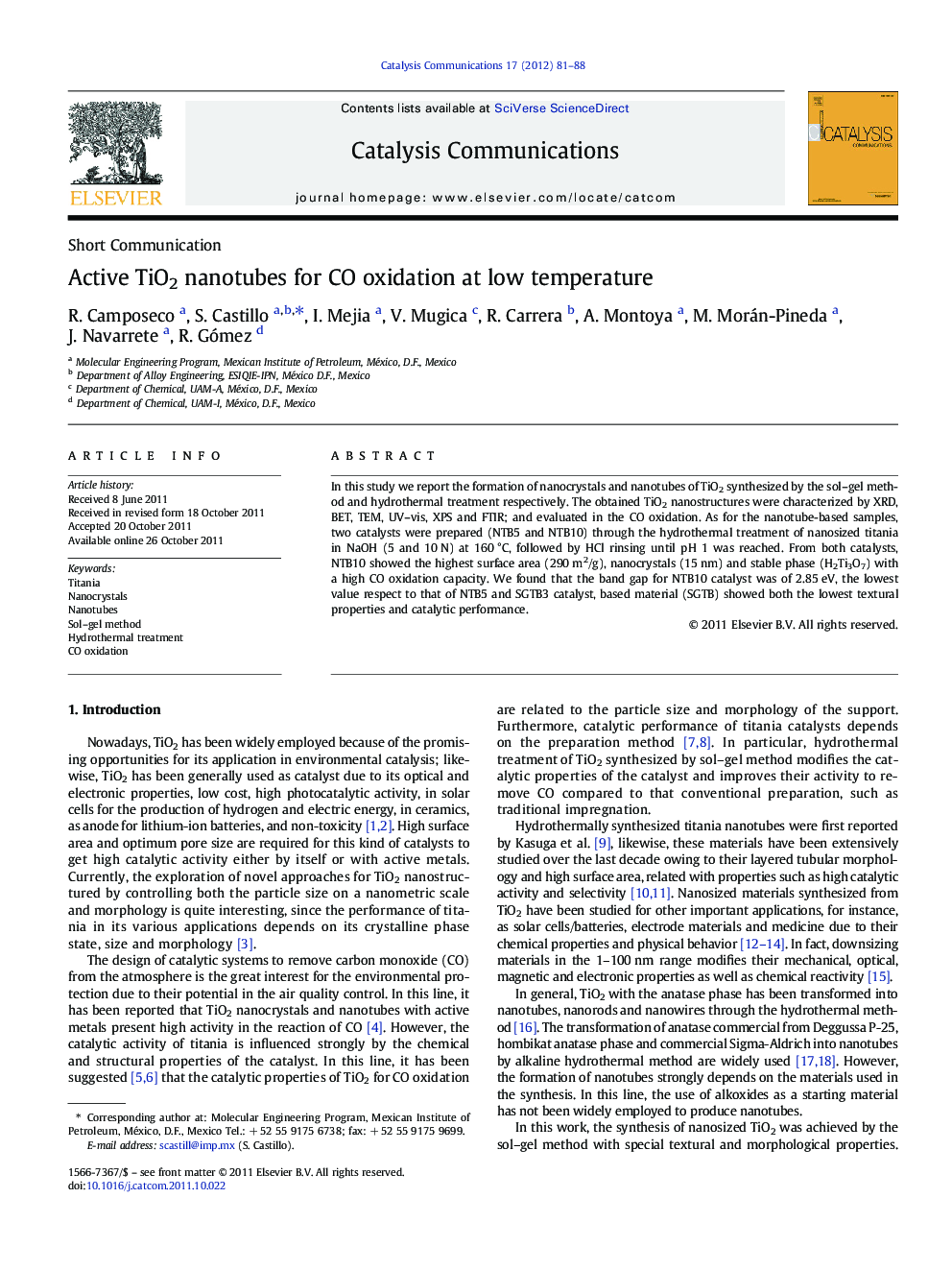| Article ID | Journal | Published Year | Pages | File Type |
|---|---|---|---|---|
| 50976 | Catalysis Communications | 2012 | 8 Pages |
In this study we report the formation of nanocrystals and nanotubes of TiO2 synthesized by the sol–gel method and hydrothermal treatment respectively. The obtained TiO2 nanostructures were characterized by XRD, BET, TEM, UV–vis, XPS and FTIR; and evaluated in the CO oxidation. As for the nanotube-based samples, two catalysts were prepared (NTB5 and NTB10) through the hydrothermal treatment of nanosized titania in NaOH (5 and 10 N) at 160 °C, followed by HCl rinsing until pH 1 was reached. From both catalysts, NTB10 showed the highest surface area (290 m2/g), nanocrystals (15 nm) and stable phase (H2Ti3O7) with a high CO oxidation capacity. We found that the band gap for NTB10 catalyst was of 2.85 eV, the lowest value respect to that of NTB5 and SGTB3 catalyst, based material (SGTB) showed both the lowest textural properties and catalytic performance.
Graphical abstractNanotubes, nanoribbons and nanocrystals could become to be the main technology to remove CO at low temperature, even at room temperature, from the polluted urban air.Figure optionsDownload full-size imageDownload as PowerPoint slideHighlights► Nanocrystals and nanotubes of titania by sol–gel were synthesized. ► Alkali concentration affect the textural and morphological properties of TiO2. ► Titania nanotubes catalyze, by themselves, the CO oxidation at low temperature. ► Titania nanotubes based catalyst are a powerful tool for facing the air pollution.
